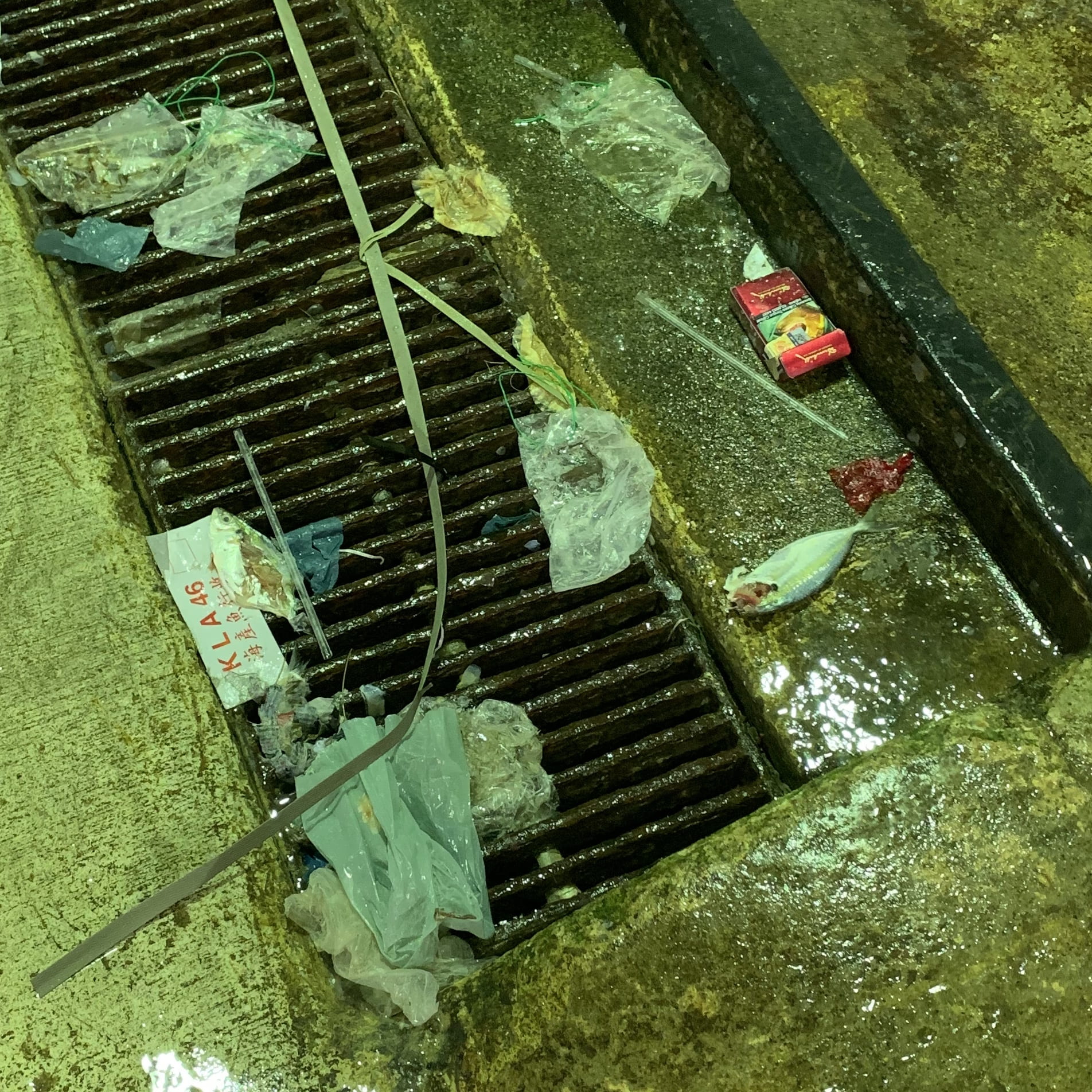Hello!
Two weeks ago, I headed to Jurong Fishery Port at 4am, where the fish we eat are unloaded fresh off ships coming in from other countries. My parents tagged along too, deciding that it would be an interesting experience. And it was! All five senses of mine were constantly engaged! So that’s how I’m structuring this post on this nightly excursion hehe

Smell
Initially, I felt apprehensive of the smell to come. Many others who blogged about their visits (including Sheryl and Ophelia – check out their blogs on their experiences at the smaller Senoko Fishery Port) forewarned their readers about the fishy stench that pervaded their nostrils the moment they entered. As we drove towards the carpark gantry, winding down the window already brought on a whiff of fishiness. …But as it turned out, it wasn’t that bad! As we entered the warehouse where the wholesale vendors were situated, the smell didn’t intensify. Sure, it was fishy, but not as pungent as I’d expected in a place brimming with so much fish! In a while, you’d get used to it.

Funnily enough, the worst smell there was cigarette smoke from the lit tobacco sticks of vendors. Apparently, it’s fine to smoke where fish are being sold?
Hear
I can’t recall if it was distinctly noisy, but there was a general sense of hustle and bustle. People were hard at work.



If you heard a rolling rumbling sound, you’d instinctively turn to look if you were in the way of someone moving their fish. What warmed me was the good-natured reactions of the vendors when I apologise for being in the way. They went “不要紧” (“never mind” in Chinese), surprising me. I had expected some belligerence. Like, maybe they’d scoff at visitors who knew nothing of their hard work. But evidently, that’s just my misconception.
Touch (Feel)
There wasn’t any air-conditioning, no, but it certainly felt like there was! The cold likely came from all the ice used to preserve the freshness of the fish.

That got me thinking: what’s the water footprint of the fish we eat? Do the ice count? I’d say yes, since water footprint “measures the amount of water used to produce each of the goods and services we use” (Water Footprint Network, n.d.). The significant chill in the whole warehouse meant a heck ton of ice was being used!

If you consider all the ice used in transport and sale, plus the water used in washing and cooking, seafood dishes are pretty thirsty! Or are they? Weirdly enough, there doesn’t seem to be much information on the water footprint of seafood, compared to other foods like beef and chicken. Indeed, this study acknowledges the ‘seafood gap’ in scientific literature, which is the relatively dim spotlight on freshwater usage in the production of seafood, as the majority of water footprint calculations mainly consider “agriculture, industry and domestic water use”. The freshwater footprint of wild fish mostly comprises “capture, transportation and processing”, which the study interestingly highlights as being relatively small such that it’s pretty much insignificant.
Incidentally, check out this aesthetic post by neilfarber :>
Up next will be the last two senses – sight and taste, so stay tuned and sea ya!
P.S.

References
Water Footprint Network. (n.d.). What is a water footprint? Retrieved from https://waterfootprint.org/en/water-footprint/what-is-water-footprint/.
Anlydia Ooi
October 22, 2019 — 11:26 pm
Hi Vera!
Wow! This is a really interesting post! I’ve never been to Jurong Fishery Port before. And I’ve definitely never thought of seafood’s water footprint before. I wonder how the water footprint differs for fisheries… Super excited to read your next post!
Oh and just a fun fact, the fishy smell can actually be reduced if one uses the ikejime method to kill fish. But it’s not commonly practiced because of the time and cost.
– Anlydia
vera
October 25, 2019 — 5:26 pm
Hello Anlydia!
Thanks for reading my blog!
I feel that farmed fish (aquaculture) would yield a larger water footprint than wild ones (capture fisheries) partly due to the need for aquafeeds, which is made from wild fish. And indeed, there are concerns about whether this reliance on wild fish for fish meal and fish oil is sustainable, and efforts are being made to shift away from aquafeeds to land-based feeds. This WWF report suggests that feeds made from genetically modified yeast or even insects could reduce the ecological footprint (“a specific measure of resource requirements of human activities”) of aquaculture of fishes higher up in the food-web. Though, I’m not too sure whether this really entails a decrease in water footprint per se since the ecological footprint encompasses much more than water usage.
Interestingly, different species of fish consume different types and amounts of aquafeed, like how salmon require a larger amount of fishmeal than carps. This likely points to a larger water footprint for (farmed) salmon.
And yeah! I’m aware of the ikejime method of killing fish! Thanks for sharing 🙂 I watched a video on YouTube about it. It’s definitely a more humane method of killing fish compared to suffocation, as is often the case for the fish we eat. Even after a period of storage, fish killed via ikejime taste better than their suffocated counterparts! Kinda want to try it :,)
Vera
References
https://www.sciencedirect.com/science/article/pii/S0309170817302488?via%3Dihub